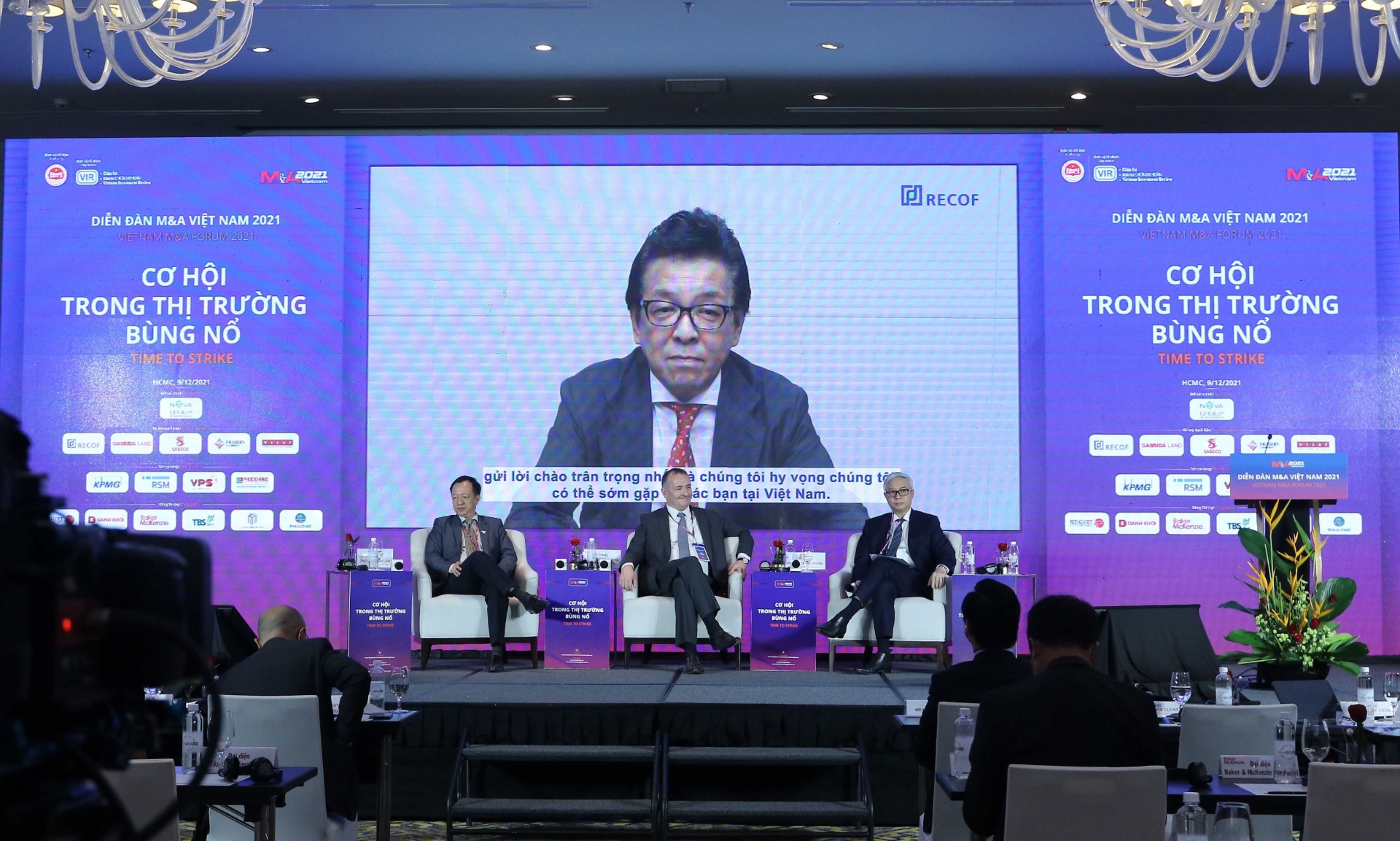 |
Vietnam’s M&A market has erupted with a frenzy of transactions over the last three years where both the transaction value and volume were being driven by Vietnamese companies. Historically, M&A activities were mainly driven by foreign investors, specifically from Thailand, Singapore, Japan, South Korea, and Taiwan. However, the markets are now witnessing a shift towards local players as they are becoming more active in M&A.
In the first 10 months of 2021, local investors have displayed strong involvement in M&A activities with 133 transactions closed, while other foreign players from Japan and South Korea completed 30 and 19 transactions, respectively.
A survey by KPMG shows that investors remain optimistic about Vietnam's prospects. The market is expected to grow hotter in the coming time thanks to a pool of talents and the recovery of economic activities.
In particular, some industries such as retail, food and beverage, entertainment, and tourism have been hit hard by the pandemic. Businesses are looking for cash flows to compensate for the losses on their balance sheets. This will boost M&A activities in Vietnam. Indeed, money from both local and foreign investors are seeking to support Vietnamese firms.
Despite the prolonged impact of the pandemic, several investors still manage to conduct M&A transactions in Vietnam. I have joined many virtual meetings with foreign investors in different time zones. I really enjoy using digital platforms when working with investors.
We see two kinds of M&A transactions. For small transactions, investors want to complete the deals as quickly as possible. With the bigger ones, investors remain cautious as they cannot travel to Vietnam to meet the team and see the business.
Overall, investors still have a very high level of confidence in the Vietnamese market, which is a good sign for Vietnam's M&A market. In 2020, Vietnam is still one of the three countries and territories that achieve positive economic growth along with China and Taiwan. In 2021, Vietnam is expected to post a GDP growth of 3-3.5 per cent. Between September and October, Prime Minister Pham Minh Chinh also emphasised attracting large investment projects with several attractive incentives for investors. The Vietnamese government has taken quick action to boost the recovery post pandemic.
According to RECOF’s M&A database, during 2020, the number of M&A transactions by Japanese companies in Vietnam declined from 15 in the first half to eight in the second half. In 2021, the number recovered to 13 in the first half, which included the record-breaking $1.4 billion investment in VPBank Finance by SMBC Consumer Finance, with a deal value more than three times bigger than all M&A transactions combined between the two countries in 2020.
As destinations to the outbound M&A investments from Japan, Vietnam ranked sixth in the world, according to RECOF’s M&A database for the January-October period in 2021. Vietnam is second only to Singapore in Southeast Asia, and the only other countries ranking higher than Vietnam were the US, UK, China, and India. This shows how important Vietnam is for the global expansion strategies of Japanese companies.
Despite the pandemic, many Japanese companies remain interested in investing in Vietnam because it is expected to play a crucial role in the global supply chain. The growth potential of the Vietnamese market is also recognised by many Japanese companies. Therefore, they are anxious to see Vietnam recovering from the current wave of COVID-19 at the soonest.
The COVID-19 pandemic has wreaked havoc on the businesses and economy. However, M&A opportunities remain robust thanks to strong foreign inflows. Foreign investors are considering Asia a strategic long-term investment destination. A number of mega-deals have been recorded in financial services, energy, technology, logistics, and property.
Nevertheless, it takes longer than usual to complete M&A deals during the pandemic due to movement curbs and challenges for due diligence. However, companies are stilling securing M&A deals during the pandemic.
It is worth noting that the COVID-19 pandemic has spurred digital transformation trend. Thus, businesses have actively participated in M&A and joint ventures in the digital area to increase business efficiency.
Furthermore, there has been great progress in legal reforms at the local and domestic level. Vietnam has strengthened cooperation with neighbouring countries, streamlining custom procedures, and improving market access for foreign investors.
Poised as one of the fastest-growing economies in Southeast Asia, Vietnam has been and will continue to be an attractive market for investors. The pandemic has created many challenges for the world economy – but at the same time, there is always an opportunity in a crisis. For instance, cross-border deals in Vietnam accounted for more than half of the country's M&A volume and represented almost 97 per cent of the country's overall deal value in the third quarter of 2021. The value of cross-border deals reported during the quarter more than doubled compared to last year.
Investment during the pandemic has proved challenging for investors across the region – in particular with difficulty in business travel. On a brighter note, the vaccination rate in Vietnam has increased and has enabled Vietnam to gradually and safely re-open the economy whilst still keeping certain safety measures in place. This is the "living with COVID-19" approach, as opposed to pursuing a "zero COVID-19" policy.
Overall, Vietnam's investment outlook is optimistic. Given its strategic location, young and dynamic workforce, and improving infrastructure, Vietnam is well-positioned to be an emerging supply chain constituent in Southeast Asia. Accordingly, we continue to see investments in manufacturing and logistics – and also renewable energy and real estate. We also expect to see continued investment in the service sectors, particularly in financial services, health, technology, digital economy, and consumer products and retail.
Source: VIR